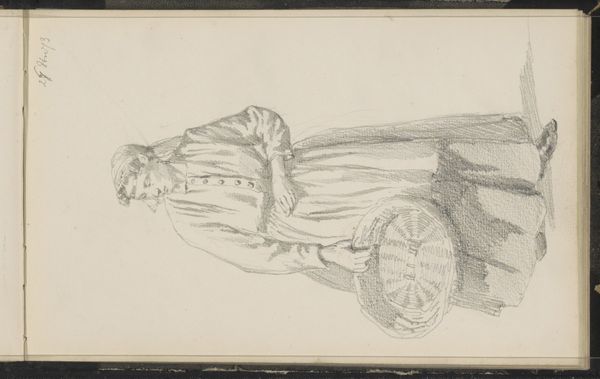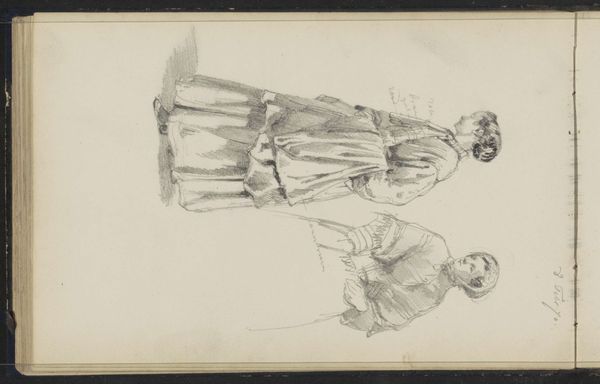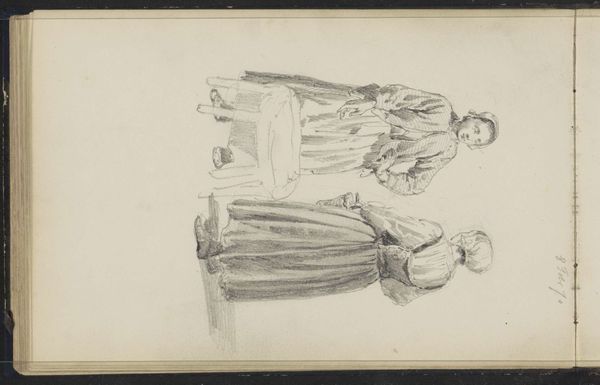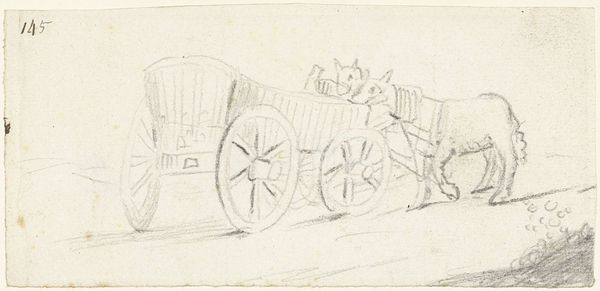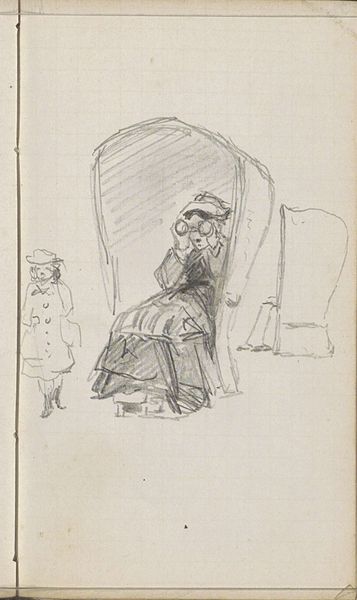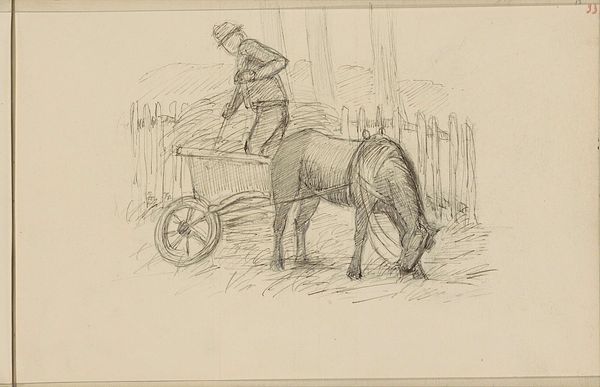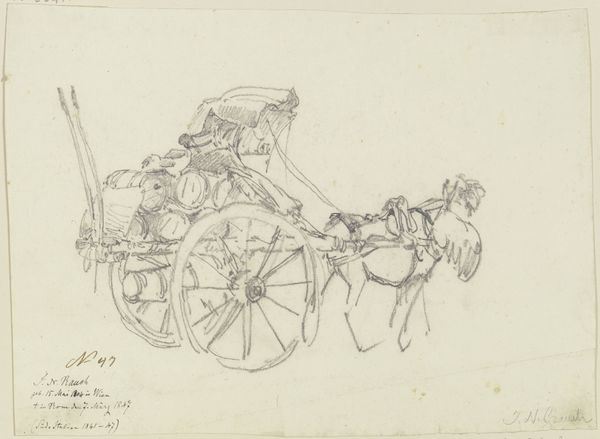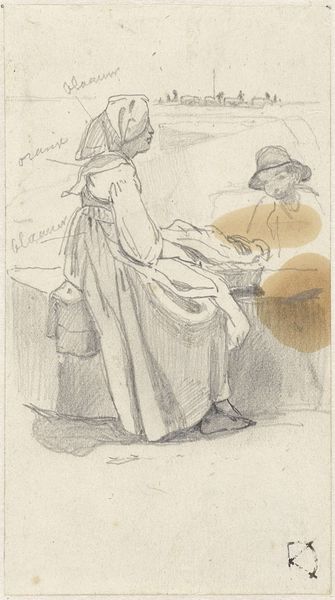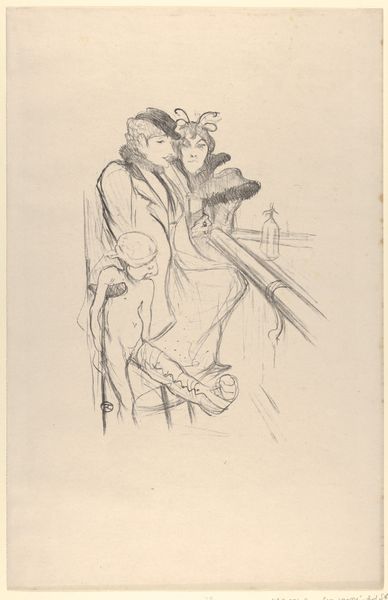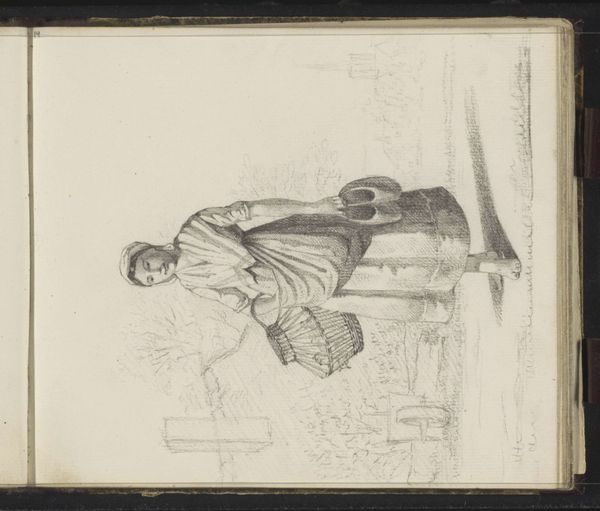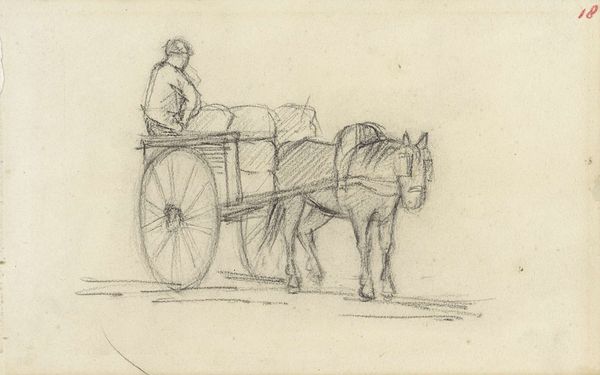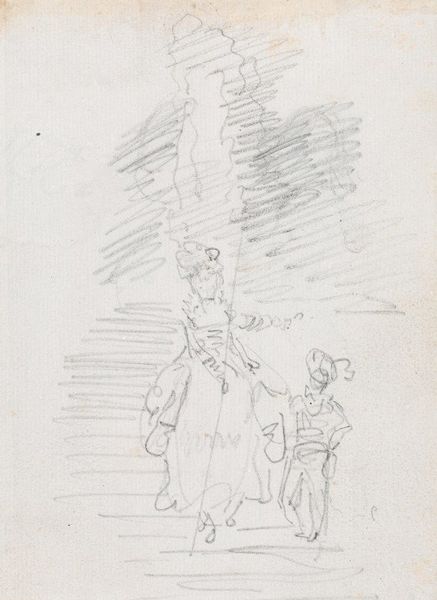
drawing, pencil
#
portrait
#
drawing
#
figuration
#
pencil
#
genre-painting
#
realism
Dimensions: height 225 mm, width 295 mm
Copyright: Rijks Museum: Open Domain
Curator: Willem Cornelis Rip created this pencil drawing, “Scharenslijper,” or "Scissors Grinder" in 1874. Editor: There's something about the tentative lines and unfinished feel that really speaks to me. It's stark but also soft, like a memory half-formed. Curator: Rip positions this work squarely within a broader 19th-century interest in representing working-class life, and more generally, thinking about the evolving socio-economic position of those individuals, right? It’s no coincidence that Realism became an increasingly important artistic style, interested as it was in picturing ordinary citizens. Editor: Exactly. Note the faces, too, worn but not defeated. The tools of his trade become almost symbolic – the grinding wheel a circle of endless work, the knives themselves potential weapons but also essential implements. It taps into archetypes of labor. Curator: Absolutely, and in some ways, it serves as a form of early social commentary. Are we celebrating labor, or are we lamenting a lack of mobility and social advancement, or both? What is Rip’s position? The fact that a young girl assists raises further questions. I do want to address what feels like its very incomplete nature: would a painting version exist that fully fleshed-out these themes? Editor: Maybe it was never meant to be finished. Perhaps Rip wanted to capture just a fleeting moment, an impression of labor and family. The sketchiness allows for interpretation. We project our own cultural memories and biases onto the scene. Curator: You know, considering this piece alongside other realist works, particularly Courbet or Millet, it adds nuance to how we understand representations of labor, power structures, and maybe, importantly, a certain perspective on family and community. The artist here is both witnessing and participating in the creation of his image of “Scharenslijper”. Editor: Right, that incompleteness invites our participation too. It reminds us that history is not fixed, symbols evolve, and narratives are always in formation. Curator: The fact that he left it unfinished adds to this piece's historical commentary, a sense that something is off, perhaps deliberately so. Editor: An unfinished song humming in our collective memory.
Comments
No comments
Be the first to comment and join the conversation on the ultimate creative platform.
